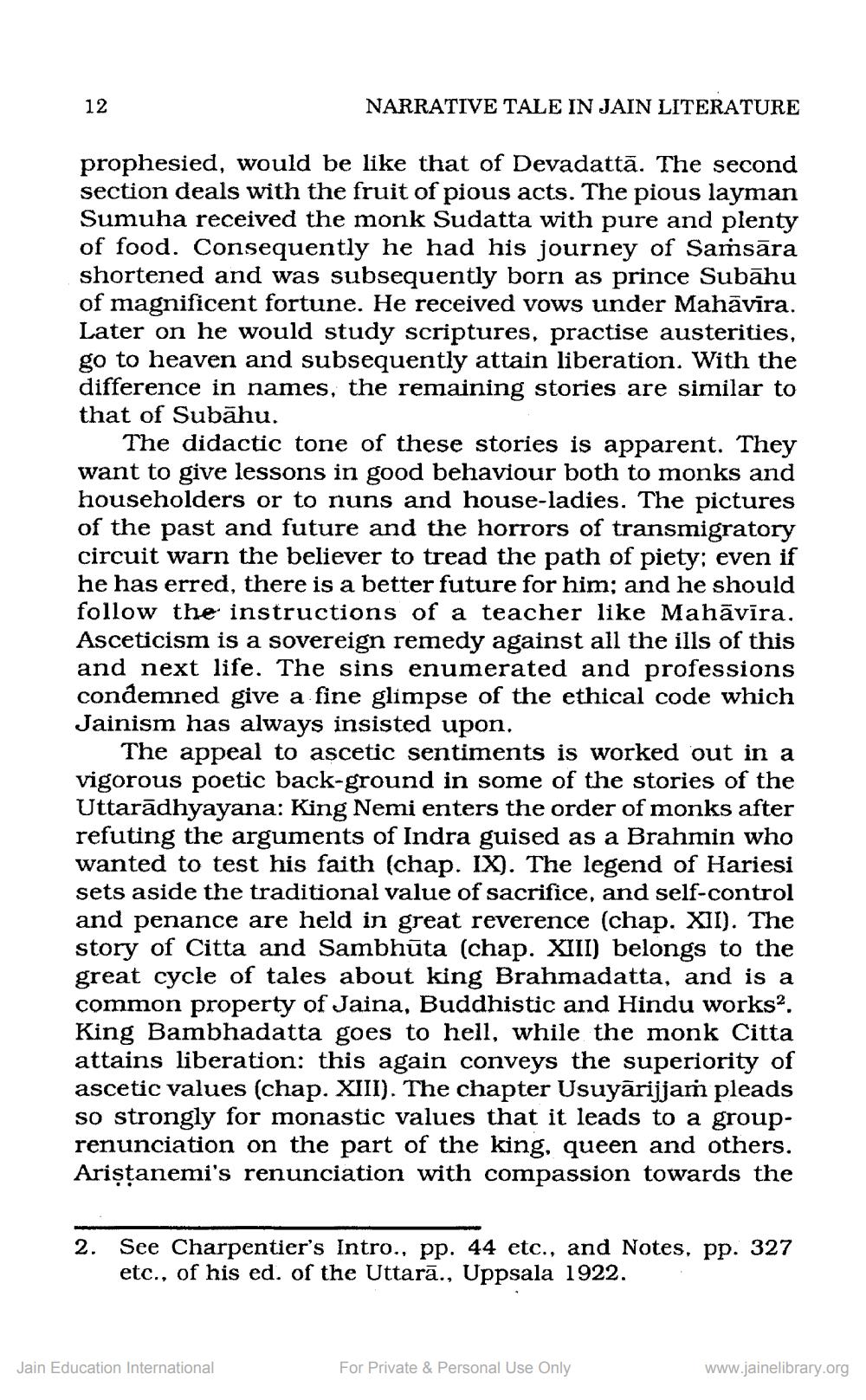________________
12
NARRATIVE TALE IN JAIN LITERATURE
prophesied, would be like that of Devadattā. The second section deals with the fruit of pious acts. The pious layman Sumuha received the monk Sudatta with pure and plenty of food. Consequently he had his journey of Samsāra shortened and was subsequently born as prince Subāhu of magnificent fortune. He received vows under Mahāvīra. Later on he would study scriptures, practise austerities, go to heaven and subsequently attain liberation. With the difference in names, the remaining stories are similar to that of Subāhu.
The didactic tone of these stories is apparent. They want to give lessons in good behaviour both to monks and householders or to nuns and house-ladies. The pictures of the past and future and the horrors of transmigratory circuit warn the believer to tread the path of piety; even if he has erred, there is a better future for him; and he should follow the instructions of a teacher like Mahāvīra. Asceticism is a sovereign remedy against all the ills of this and next life. The sins enumerated and professions condemned give a fine glimpse of the ethical code which Jainism has always insisted upon.
The appeal to ascetic sentiments is worked out in a vigorous poetic back-ground in some of the stories of the Uttarādhyayana: King Nemi enters the order of monks after refuting the arguments of Indra guised as a Brahmin who wanted to test his faith (chap. IX). The legend of Hariesi sets aside the traditional value of sacrifice, and self-control and penance are held in great reverence (chap. XII). The story of Citta and Sambhūta (chap. XIII) belongs to the great cycle of tales about king Brahmadatta, and is a common property of Jaina, Buddhistic and Hindu works. King Bambhadatta goes to hell, while the monk Citta attains liberation: this again conveys the superiority of ascetic values (chap. XIII). The chapter Usuyārijjam pleads so strongly for monastic values that it leads to a grouprenunciation on the part of the king, queen and others. Ariştanemi's renunciation with compassion towards the
2. See Charpentier's Intro., pp. 44 etc., and Notes, pp. 327
etc., of his ed. of the Uttarā., Uppsala 1922.
Jain Education International
For Private & Personal Use Only
www.jainelibrary.org




